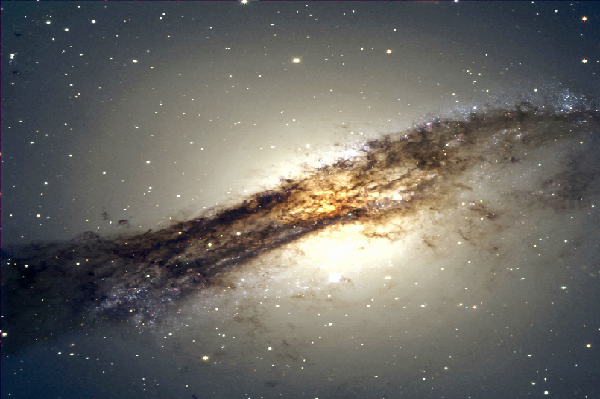Movement of giant elliptical galaxies discovered by scientists
| Paula Marie Navarra | | Sep 16, 2014 11:10 AM EDT |
A new study gives clue on the movement of giant elliptical galaxies that make up of old stars that move like a swarm of bees.
Astronomers said that in past years knowing the movement of the galaxies remains to be a challenge, they have always been considered as a non-rotating group of old stars.
Like Us on Facebook
Through observations of the M87 galaxy, the center galaxy of the Virgo cluster of galaxies, they found some bulk rotation on very low amplitude.
With the use of the Multi Unit Spectroscopic Explorer (MUSE), researchers found out that the galaxy moves around the center with an average velocities of 10 to 20 kilometers per second.
This speed may seem very high but for galaxies this is extremely low, researchers said.
Marc Sarzi, one of the researchers, said that the Sun which is the closest star in the Milky Way rotates around the Galaxy of 210 to 240 kilometer per second.
He also said that other stars of the galaxy were faster but travels in different direction of the galaxy which rotates around the center in a slower pace.
He said that M87 seems to be complicated in the MUSE spectrograph however, the results demonstrates a potential for further advancement on understanding of galaxies and their formation.
The bulk motion of the stars seems to reverse half-way from the galaxy's center, Sarzi added.
M87 which is called Messier 87 is a supergiant elliptical galaxy that was discovered by Charles Messier in 1781.
It is the second brightest galaxy located in the northern part of the Virgo galaxy which is 53.5 million light years away from Earth.
M87 has no distinctive dust lanes and was considered to the featureless ellipsoidal shape that has a diminished luminosity as moves away from the center.
It also has a supermassive black hole that forms the primary component of its active galactic nucleus that has strong radio waves.
The galaxy also has energetic plasma that came from its core that extends outward for at least 5,000 light years.
©2015 Chinatopix All rights reserved. Do not reproduce without permission
EDITOR'S PICKS
-

Did the Trump administration just announce plans for a trade war with ‘hostile’ China and Russia?
-

US Senate passes Taiwan travel bill slammed by China
-

As Yan Sihong’s family grieves, here are other Chinese students who went missing abroad. Some have never been found
-

Beijing blasts Western critics who ‘smear China’ with the term sharp power
-

China Envoy Seeks to Defuse Tensions With U.S. as a Trade War Brews
-

Singapore's Deputy PM Provides Bitcoin Vote of Confidence Amid China's Blanket Bans
-

China warns investors over risks in overseas virtual currency trading
-

Chinese government most trustworthy: survey
-

Kashima Antlers On Course For Back-To-Back Titles
MOST POPULAR
LATEST NEWS
Zhou Yongkang: China's Former Security Chief Sentenced to Life in Prison

China's former Chief of the Ministry of Public Security, Zhou Yongkang, has been given a life sentence after he was found guilty of abusing his office, bribery and deliberately ... Full Article
TRENDING STORY

China Pork Prices Expected to Stabilize As The Supplies Recover

Elephone P9000 Smartphone is now on Sale on Amazon India

There's a Big Chance Cliffhangers Won't Still Be Resolved When Grey's Anatomy Season 13 Returns

Supreme Court Ruled on Samsung vs Apple Dispute for Patent Infringement

Microsoft Surface Pro 5 Rumors and Release Date: What is the Latest?










